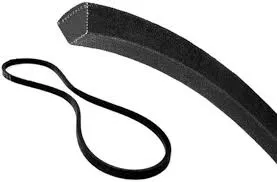- Arabic
- French
- Russian
- Spanish
- Portuguese
- Turkish
- Armenian
- English
- Albanian
- Amharic
- Azerbaijani
- Basque
- Belarusian
- Bengali
- Bosnian
- Bulgarian
- Catalan
- Cebuano
- Corsican
- Croatian
- Czech
- Danish
- Dutch
- Afrikaans
- Esperanto
- Estonian
- Finnish
- Frisian
- Galician
- Georgian
- German
- Greek
- Gujarati
- Haitian Creole
- hausa
- hawaiian
- Hebrew
- Hindi
- Miao
- Hungarian
- Icelandic
- igbo
- Indonesian
- irish
- Italian
- Japanese
- Javanese
- Kannada
- kazakh
- Khmer
- Rwandese
- Korean
- Kurdish
- Kyrgyz
- Lao
- Latin
- Latvian
- Lithuanian
- Luxembourgish
- Macedonian
- Malgashi
- Malay
- Malayalam
- Maltese
- Maori
- Marathi
- Mongolian
- Myanmar
- Nepali
- Norwegian
- Norwegian
- Occitan
- Pashto
- Persian
- Polish
- Punjabi
- Romanian
- Samoan
- Scottish Gaelic
- Serbian
- Sesotho
- Shona
- Sindhi
- Sinhala
- Slovak
- Slovenian
- Somali
- Sundanese
- Swahili
- Swedish
- Tagalog
- Tajik
- Tamil
- Tatar
- Telugu
- Thai
- Turkmen
- Ukrainian
- Urdu
- Uighur
- Uzbek
- Vietnamese
- Welsh
- Bantu
- Yiddish
- Yoruba
- Zulu
Aug . 18, 2024 12:00 Back to list
Choosing the Right Material for Your Flat Belt Applications and Performance
The Importance of Flat Belt Material in Industrial Applications
Flat belts have become an integral part of various industrial applications, serving as a crucial component in the transmission of power and motion. These belts are typically made from a variety of materials, each offering distinct advantages and suitability for specific tasks. The choice of flat belt material can significantly impact the efficiency, durability, and reliability of machinery, making it an essential consideration in industrial design and manufacturing.
Types of Flat Belt Materials
Flat belts can be constructed from several materials, including rubber, nylon, polyurethane, and various composite fabrics. Each material has unique properties that cater to different operational needs.
1. Rubber Belts Rubber is one of the most commonly used materials for flat belts due to its excellent flexibility, high friction coefficient, and resistance to wear. Rubber belts are ideal for applications requiring high grip and flexibility, such as in conveyor systems. They can also withstand extremes of temperature and exposure to various chemicals, making them suitable for harsh industrial environments.
2. Nylon Belts Nylon is another popular material owing to its strength and light weight. Nylon belts often feature a low coefficient of friction, making them an excellent choice for high-speed applications. They are resistant to abrasion and can handle considerable tensile loads, which makes them suitable for various industrial uses, including textile and packaging industries.
3. Polyurethane Belts Polyurethane is renowned for its durability and resistance to tearing and aging. Belts made from polyurethane are often used in applications where flexibility and strength are critical. Their resistance to oils and chemicals makes them useful in food processing and automotive industries, where exposure to such substances is common.
4. Composite Fabrics Composite materials can be specially designed to meet the requirements of specific applications. These belts often combine different materials to optimize performance attributes like friction, flexibility, and weight. They are increasingly popular in specialized applications where standard materials may fall short.
flat belt material

Factors to Consider When Choosing Flat Belt Materials
When selecting flat belt materials, several factors need to be considered to ensure optimal performance in their intended application
- Load Capacity The chosen material must be able to bear the load requirements of the application without stretching or deforming prematurely. - Environmental Conditions Exposure to temperature extremes, humidity, and chemicals can affect material performance. Selecting a material that is resistant to these conditions is crucial.
- Friction Coefficient The friction between the belt and the pulleys must be adequate to ensure efficient transmission of power. Different materials offer varying levels of grip, affecting the overall system design.
- Durability and Lifespan The longevity of the belt is essential for reducing downtime and maintenance costs. Material durability leads to fewer replacements and better overall productivity.
Conclusion
Flat belt materials play a vital role in the efficiency and functionality of industrial systems. Crafting the right choice involves understanding the specific demands of the application—be it in manufacturing lines, transportation systems, or processing plants. As industries continue to evolve and adopt more advanced technologies, advancements in flat belt materials will undoubtedly pave the way for improved performance and efficiency. Selecting the right flat belt material is not just a matter of convenience; it is a critical decision that can influence the overall success of industrial operations. By understanding the unique properties of various materials, engineers and designers can optimize machinery and processes for better performance and sustainability in today's competitive market.
-
Korean Auto Parts Timing Belt 24312-37500 For Hyundai/Kia
NewsMar.07,2025
-
7PK2300 90916-T2024 RIBBED BELT POLY V BELT PK BELT
NewsMar.07,2025
-
Chinese Auto Belt Factory 310-2M-22 For BMW/Mercedes-Benz
NewsMar.07,2025
-
Chinese Auto Belt Factory 310-2M-22 For BMW/Mercedes-Benz
NewsMar.07,2025
-
90916-02660 PK Belt 6PK1680 For Toyota
NewsMar.07,2025
-
drive belt serpentine belt
NewsMar.07,2025

